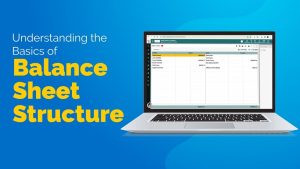Financial reporting and analysis play an extremely important role for companies and investors. Financial reporting provides important information about the company and represents the financial performance of that company over time. Investors can analyze the financial reports of a firm to make learned decisions about their investments. With a better reading and analysis of their financial report, the firm owners can also make decisions that will help amplify their businesses. In this article, we are about to learn more about financial reporting, types of financial reporting, and its benefits to industry.
What is Financial Reporting and what is its importance?
Financial Report is an in-detail review of your, monthly, quarterly, and annual financial data. A financial report shows key points of a business In order to understand a firm’s performance and growth over time, it is important to keep a detailed review of a company’s expenditures, sales, profits, and losses. Analyzing the financial report of a company is very important for predicting a company’s future growth.
Companies can utilize these financial reports to organize their accounting data and report on the current financial status. Financial Reports also, forecast the predictions of future profitability of the company and growth.
The several key objectives of financial reporting and analysis are:
- Tracking cash flow
- Evaluating assets and liabilities
- Analyzing shareholder equity
- Measuring profitability
What are the different types of financial analysis reports?
Balance Sheet.
The balance sheet is used to present the financial statements in a specific format. It helps in maintaining consistency and comparability in financial reporting. Organizing the balance sheet in a standardized way makes it easier for financial statement analysis for the users of different companies. The balance sheet is also known as the statement of financial position. It presents in transparency what an entity owns and owes, or its assets and liabilities in a given period of time. The balance sheet is a fundamental thing in accounting that presents a standard way of financial reporting. It includes the following in the presentation of their financial statement.
1. Assets: These are the resources that are owned by the company, they include cash, inventory, property, and equipment. They are generally listed on the balance sheet in the decreasing order of liquidity.
2. Liabilities: Liabilities are obligations or debts that are owed by the company, like accrued expenses, accounts payable, and loans. Liabilities are listed in order of maturity, which means that short-term liabilities appear before long-term ones.
3. Equity: Equity includes contributions by the owners of the company like, share capital and profits reinvested into the business
4. Balance: This ensures that the accounting equation is balanced, meaning that the company’s total assets equal its total liabilities and equity. A conventional balance sheet entails the above-given components to present the financial statement with clarity. It helps making financial statement analysis easy.
Income Statement.
An income statement is a very important source of information about all the major factors that are affecting the profitability of a company. As compared to other statements, such as cash flow statements or balance sheets, it is generated on a more frequent basis and hence, gives timely updates. The income statement of a company is responsible in presenting a company’s gains, expenses, and losses, which can further be put into an arithmetic equation to calculate a company’s profits and losses for a specified time frame. This financial analysis report is further analyzed by the people of the company which helps make sure that their firm is running on a good financial footing. Amongst the people studying the financial report, are two main groups. Internal and External.
- Internal Users. This group entails the company’s management and the board of directors. They make use of this information to analyze their firm’s monetary footing and make learned decisions to enhance the generation of profit for their company. They can introduce or revoke any existing strategies in order to better their company’s profitability.
- External Users. This group comprises of, the organization’s competitors’s investors and creditors. They analyze the financial analysis report of the company for their personal benefit. For example, the investors study the reports, to get an understanding of the company’s financial footing, so as to know if they should keep invested or withdraw their investment. The creditors who are responsible for providing loans to the company, evaluate their income report, to analyze if they are capable of paying off the loans that they will be offered or not. And the rivals of the said company, study their income reports to know their expenditure patterns of the company.
Below stated are a few things that the income statement helps with.
- The income statement will help the business owners decide on how can their firm generate profit by increasing revenue, decreasing costs, or probably both.
- It also shows the viability of the methodologies that the business set toward the start of a monetary period. The entrepreneurs can refer to these reports to check whether the techniques have paid off.
- While other financial statement analysis are distributed every year, the income statement is created either quarterly or month-to-month. Because of this, entrepreneurs and investors can follow the presentation of the business intently and pursue informed choices. This additionally empowers them to find and fix independent venture issues before they become huge and costly.
- It features future costs or any unforeseen expenditure that are caused by the organization, and any areas that are finished or under financial plan. It incorporates rents, pay rates, and other overhead costs. As an SME develops, it might find its costs taking off. These costs might include employing laborers, purchasing supplies, and advancing the business.
- This assertion provides investors with an outline of the business in which they are wanting to contribute. Banks and other monetary organizations can likewise examine this record to conclude whether the business can afford the loan.
Cash Flow Statement.
A cash flow statement tracks the inflow and outflow of money, giving bits of knowledge into an organization’s monetary well-being and functional efficiency. The cash flow statement estimates how well an organization deals with its money position, meaning how well the organization produces money to pay its obligatory debts and assets and its working costs. As one of the three principal budget summaries, the cash flow statements supplement the balance sheet and the income statement. The cash flow statement lays out an image concerning how the tasks of an organization are running, where its cash comes from, and how that cash is being spent. Otherwise called the statement of cash flows, the cash flow statement assists its creditors with deciding how much money is accessible (also called as liquidity) for the organization to support its working costs and pay down its debts. The cash flow statement is similarly critical to financial investors since it lets them know whether an organization is on strong monetary ground. Accordingly, they can utilize the assertion to improve, more educated choices about their ventures
Statement of Shareholder’s Equity.
Shareholder’s equity also called owner equity, is the investments made by the shareholders when the company is first formed. In simple words, it is everything that belongs to the owners or the shareholders of the firm. In any case, if the company needs to be liquidated, shareholder’s equity is the money, that will be attributable to its owners after the clearance of debts. A Shareholder’s equity is the numbers that financial investors and experts consider when they are assessing a company’s overall financial well-being. It helps them in passing a fair judgment on the nature of the company’s financial ratios, further, helping the company make better decisions regarding their investments. Retained earnings are a part of Shareholder’s equity as is any capital put resources into the organization.
A shareholder’s equity is separated into four types:-
- Preferred Shares.
- Common Shares.
- Paid in capitals. (Contributed Capital)
- Retained Earnings.
Difference between Cashflow Statement and Income Statement and Balance Sheet.
The cash flow statement estimates the performance of an organization, throughout a particularly defined time frame. However is not easily controlled by the planning of non-cash exchanges. As verified above, the cash flow statement can be obtained from the income statement and the balance sheet. Net profit from the income statement is the figure from which the data on the cash flow statement is found. Be that as it may, they just work into deciding the section where the activities being operated are part of the cash flow statement. Accordingly, net profit doesn’t have anything to do with any investment or monetary exercise areas of the cash flow statement.
The Income Statement incorporates depreciation expense, which doesn’t really have a related cash flow. It is just an allocation of the expense of an asset over its valuable life. An organization has a slack to pick its devaluation technique, which changes the depreciation cost covered by the pay proclamation. The Cash flow statement, then again, is a proportion of genuine inflows and surges that can’t be as handily controlled.
With respect to the balance Sheet, the net income covered on the cash flow statement must be equal to the net change in the different items given in the Balance Sheet. Excluding the cash counterparts and non-cash accounts, for example, accumulated depression and an aggregated amortization. For instance, assuming you ascertain income for 2019, ensure you utilize 2018 and 2019 asset reports.
Who uses Financial Analysis Reports?
The financial report of a company or an organization can be analyzed by various institutions or individuals alike, most importantly to get an image of the firm’s future growth and present profit and loss analysis conditions, but many different firms read and study the reports of their competitors to analyze their growth and setbacks. Here we will know who uses financial analysis reports.
The Company’s Management.
The firm’s administration is the most important user of the financial report analysis. Even though they are the ones who set up the financial report analysis, the board and the administration need to refer to them while thinking about the advancement and development of the firm. The firm’s administration envisions the budget report according to the viewpoint of liquidity, cash flow, profitability, resources, and liabilities, cash adjustments, reserve necessities, debts to be paid, project funding, and other everyday functional exercises. Basically, the organization’s administration needs budget summaries to arrive at conclusions about the business.
Investors of the company.
Investors are just as much the owners of the company as the owners themselves. They would want to know the financial situation of the company. This knowledge about the financial statement of the company would help them know if the company is running in profit or not, and if the company will run in profit in the long run or not. This helps the investors make learned decisions about whether they should stay invested in the company or withdraw their investment.
The customers of the Company.
The clients of the company need to see the financial report of that they are purchasing their services or products from. High-value clients, usually prefer to maintain long-term associations or agreements with the organization. Hence, they might want to work with monetarily stable companies. This preference is because a company that has a financially stable business, will offer their clients better services, for example, credit sales, and can deliver products and discounts at cheaper rate than the market.
The Contenders of the Company.
The contenders of the company would want to know the financial report of the company that they are competing with. When they are educated about the financial report of the company, keeping an upper hand on their competitors, might be easy. Therefore, in order to keep the competitive edge they would like to want to have an eye on the financial reports of their rival company. They could also analyze their financial report to study their own strategies and change them if required.
Government Agencies.
The income tax department and the sales tax department are some of the government agencies that might want to go through the company’s financial reports to check, assuming that the company has covered all the fitting taxes. Apart from policing the tax payments of the company, the government organizations may also make future forecasts about the tax predictions of the company based on their performance on the financial report.
Conclusion.
The financial reports of the company hold very important data about the organization. It gives an accurate image of the monetary undertakings of the organization and its presentation, which can be compared to that of friends and contenders. Consequently, as examined in this article, different clients, read and figure out the firm’s financial report, for a thorough profit and loss analysis, that will help predict the future turn of events for the company.
Also Read:
- Understanding the Basics of Balance Sheet StructureThe definition of a balance sheet is a financial statement that shows the company’s assets, liabilities, and shareholder equity at a particular time point. Balance sheets offer the basics to compute return rates for investors and analyse a company’s capital… Read more: Understanding the Basics of Balance Sheet Structure
- Financial Management Made Easy With Billing and Invoicing SoftwareFinancial management for businesses is much more than paying bills and buying machinery and equipment. It incorporates controlling and tracing all the cash flowing in and out of the business, and taking the required steps to make the organization as… Read more: Financial Management Made Easy With Billing and Invoicing Software
- How to prepare a balance sheet by month summary?Preparing a balance sheet is an essential practice that should be conducted either on a monthly or quarterly basis. This financial statement shows your company’s financial position by detailing the assets, liabilities, and shareholders’ equity of your company. Let’s discuss… Read more: How to prepare a balance sheet by month summary?
- A Guide to Balance Sheet FormatsAre you a business owner and want to know ‘what is the balance sheet formats?’ if yes, then you have jumped on the right page. Continue reading about the balance sheet in detailed form- A balance sheet is a report… Read more: A Guide to Balance Sheet Formats
Frequently Asked Questions
What are the 4 types of financial reporting?
Financial reporting is divided into four different types, they are:-
Balance Sheet is used to present the financial statements in a specific format. It helps in maintaining consistency and comparability in financial reporting.
Income Statement, It presents a company’s gains, expenses, and losses, which are then used to calculate a company’s profits and losses for a specified time frame.
Shareholder’s Equity, also called owner’s equity is the investments made by the shareholders when the company is first formed.
and Cash flow statement. It tracks the inflow and outflow of money, giving bits of knowledge about an organization’s monetary well-being and functional efficiency.
Why is financial reporting important for a company?
Financial analysis of a company helps to analyze a company’s profits and losses and future predictions of growth. It is beneficial for the business owners, competitors of the company, and investors that make proper decisions regarding their profits.
What is a financial report example?
Financial reports have explicit arrangements that make them understood and satisfactory to planned investors, prospective investors, or lenders. For instance, a balance sheet isolates liabilities, resources, and proprietor’s value into discrete segments. The balance sheet then adds up to the sums it records for each segment.






